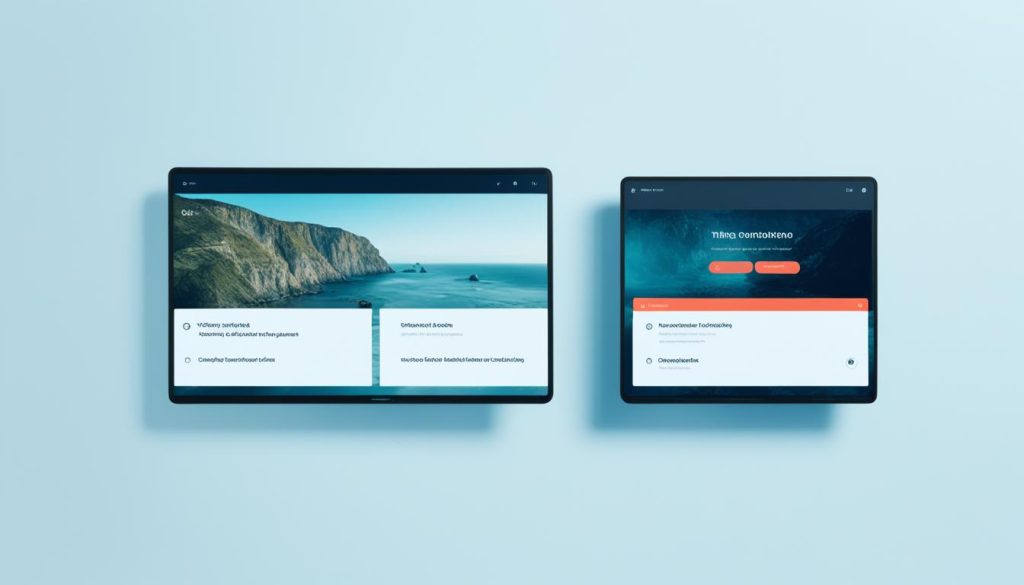The way we watch television has changed significantly over the years. Cable TV and IPTV are the two most common options for watching television programmes. While both deliver favourite shows and movies, they do so in very different ways. Cable TV operates by transmitting programmes through broadcast networks to homes using light signals carried by fibre-coaxial networks. In contrast, IPTV represents a paradigm shift, transforming shows, music, and live TV programmes into a compressed digital format and delivering them through the home internet connection.
Subscribers can select and play programmes on their TV or other connected devices within their home internet network, depending on their chosen channel package. IPTV requires only an internet connection, making it accessible wherever the internet is available, unlike cable TV which requires the installation of long cable wires and signal boosters. Additionally, IPTV offers customisation, allowing users to tailor their channel lineup and providing multiple local and international channels with affordable plans, whereas cable TV boasts a diverse channel lineup but may require different subscription plans for specific channels, leading to increased costs.
Key Takeaways
- IPTV delivers content over the internet, while cable TV uses traditional broadcast networks.
- IPTV offers more flexibility and customisation in channel selection and pricing.
- Cable TV provides a more established and reliable viewing experience but may be more expensive.
- IPTV requires a stable internet connection, while cable TV is less dependent on internet quality.
- IPTV allows for interactive features like pause, rewind, and on-demand playback.
Understanding IPTV and Traditional TV Broadcasting
In the rapidly evolving world of television, two distinct technologies have emerged as the dominant players: IPTV (Internet Protocol Television) and traditional TV broadcasting. To fully comprehend the differences and advantages of these two systems, let’s delve deeper into their respective characteristics.
What is IPTV?
IPTV, or Internet Protocol Television, is a system in which TV services are delivered via the internet protocols (IP) over a data network that is packet switched, like LAN, or the Internet, rather than the traditional signals that are broadcast on television (terrestrial, satellite, and cable). This innovative approach to television viewing offers a host of benefits to consumers, revolutionising the way they engage with their favourite content.
How Does IPTV Work?
The process of IPTV service delivery begins with acquiring content from various sources, including live broadcasts, video on demand platforms, and other media. This content is then encoded into a digital format and saved on servers, allowing users to have quick and easy access to the required content. The user receives the content over a broadband internet connection, and a set-top box decodes the digital signals back to the format which can be watched on a TV screen. IPTV users can often get a more interactive experience, with the ability to enjoy live or on-demand content, pause and play it, browse channels, and connect to a DVR.
Traditional TV Broadcasting Methods
In contrast to IPTV, traditional TV broadcasting relies on the use of terrestrial, satellite, or cable networks to deliver television signals to viewers. These signals are transmitted in an analog or digital format, and receivers, such as televisions or set-top boxes, are required to convert the signals into a viewable format. This method of television delivery has been the industry standard for decades, but it is now facing increasing competition from the more versatile and innovative IPTV technology.
Comparing IPTV and Traditional TV Broadcasting
When it comes to content delivery, IPTV holds a distinct advantage over traditional TV broadcasting. IPTV delivers content over a broadband internet connection, with the service provider maintaining strict control over the bandwidth, quality, and speed of the content delivery, ensuring a consistently steady viewing experience for subscribers. In contrast, traditional TV broadcasting is inherently bound by broadcasting schedules, limiting viewer options to the specific programmes currently airing.
Accessibility and Flexibility
The accessibility and flexibility offered by IPTV set it apart from traditional TV broadcasting. IPTV services can be accessed from a variety of devices, including televisions, smartphones, tablets, and computers, allowing users to enjoy their preferred content wherever they are, as long as they have a reliable internet connection. This mobility and on-the-go accessibility are a key differentiator, as traditional TV broadcasting typically confines viewers to their home television sets.
Quality and Reliability
Both IPTV and traditional TV broadcasting strive to deliver high-quality video and audio experiences, but the underlying technologies differ. IPTV, with its ability to control bandwidth and optimise content delivery, often ensures a more consistent and reliable viewing experience, with fewer interruptions or signal disruptions. Traditional TV broadcasting, on the other hand, can be susceptible to weather conditions, signal interference, and other external factors that can impact the overall quality and reliability of the viewing experience.
Cost Considerations
When it comes to cost, IPTV and traditional TV broadcasting present different propositions. IPTV services typically offer more flexible and cost-effective subscription models, allowing viewers to customise their channel packages and pay only for the content they desire. In contrast, traditional TV broadcasting often requires a more standardised and comprehensive channel lineup, leading to higher subscription fees, especially for viewers who may not require access to the full range of channels.

How does IPTV compare to traditional TV broadcasting?
When comparing IPTV and traditional TV broadcasting, it is important to consider the advantages and drawbacks of each approach. IPTV, or Internet Protocol Television, offers a range of benefits that set it apart from the traditional TV broadcasting model.
Advantages of IPTV
IPTV provides users with a wide selection of content, including live TV channels, on-demand movies and series, and the ability to watch content on multiple devices. The interactive features, such as pause, rewind, and on-demand playback, enhance the viewing experience and offer greater flexibility. Additionally, IPTV services often provide a la carte pricing or subscription models, allowing viewers to choose and pay for only the channels they want, leading to more cost-effective options.
Drawbacks of IPTV
One of the primary drawbacks of IPTV is its reliance on a stable internet connection. If the internet connection is unreliable or experiences interruptions, the viewing experience can be disrupted. Furthermore, IPTV may be susceptible to technical issues, such as buffering or lag, which can impact the overall quality of the service.
Advantages of Traditional TV Broadcasting
Traditional TV broadcasting, on the other hand, offers a reliable and straightforward viewing experience. The transmission of content through broadcast networks ensures a consistent quality, and viewers have access to a wide range of local channels. Additionally, traditional TV broadcasting is not as dependent on internet connectivity, making it a more accessible option for some consumers.
Drawbacks of Traditional TV Broadcasting
The primary drawback of traditional TV broadcasting is the limited flexibility and content options. Viewers are bound by broadcasting schedules, limiting their ability to watch content on-demand or on multiple devices. Furthermore, the cost of traditional TV services, which often include bundled packages, can be higher compared to IPTV’s a la carte options.
Conclusion
The choice between IPTV and traditional TV broadcasting ultimately comes down to personal preferences and priorities. IPTV offers a modern and flexible alternative to traditional TV, with a wide range of content, interactive features, and cost-effective subscription options. However, it is dependent on a stable internet connection and may be susceptible to technical issues.
On the other hand, traditional TV provides a reliable and straightforward viewing experience, with consistent quality and access to local channels. Yet, it lacks the flexibility and content variety of IPTV. Ultimately, consumers must weigh the advantages and drawbacks of each option to determine which best suits their viewing habits and preferences.
As the technology and market continue to evolve, the lines between IPTV and traditional TV broadcasting may become increasingly blurred. Consumers can expect to see a more diverse range of options, catering to their unique needs and preferences. The future of television viewership will likely be a balance of the convenience and customisation offered by IPTV and the dependability of traditional TV broadcasting.
FAQ
What is IPTV?
IPTV, or Internet Protocol Television, is a system in which TV services are delivered via the internet protocols (IP) over a data network that is packet switched, like LAN, or the Internet, rather than the traditional signals that are broadcast on television (terrestrial, satellite, and cable).
How does IPTV work?
The process begins with acquiring content from various sources, including live broadcasts, video on demand platforms, and other media. This content is then encoded into a digital format and saved on servers, allowing users to have quick and easy access to the required content. The user receives the content over a broadband internet connection, and a set-top box decodes the digital signals back to the format which can be watched on a TV screen.
How does IPTV compare to traditional TV broadcasting?
IPTV delivers content over a broadband internet connection, with the service provider controlling the bandwidth, quality, and speed of the content delivery, ensuring a steady viewing experience. In contrast, traditional TV broadcasting is bound by broadcasting schedules, limiting viewer options to what’s currently airing.
What are the advantages of IPTV?
The advantages of IPTV include a wide range of content, flexibility in viewing options, interactive features, and cost-effective subscription models. IPTV offers access to a vast array of live TV channels, on-demand movies and series, and the ability to watch content on multiple devices. The interactive features, such as pause, rewind, and on-demand playback, enhance the viewing experience. Additionally, IPTV services often provide a la carte pricing or subscription models, allowing viewers to choose and pay for only the channels they want.
What are the drawbacks of IPTV?
IPTV is dependent on a stable internet connection and may be susceptible to technical issues. Traditional TV, on the other hand, provides a reliable and straightforward viewing experience, with consistent quality and access to local channels, but it lacks the flexibility and content variety of IPTV.
What are the advantages of traditional TV broadcasting?
Traditional TV broadcasting provides a reliable and straightforward viewing experience, with consistent quality and access to local channels.
What are the drawbacks of traditional TV broadcasting?
Traditional TV broadcasting is bound by broadcasting schedules, limiting viewer options to what’s currently airing, and it lacks the flexibility and content variety of IPTV.



